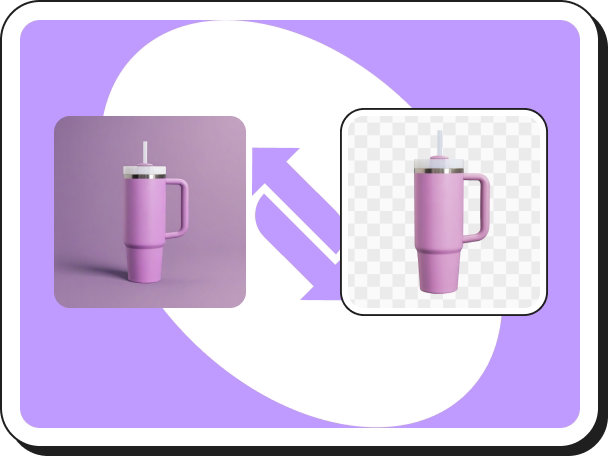Walmart vs Amazon: Choosing the Right Marketplace for Your Business
 Pic Copilot Team
Pic Copilot TeamAmazon and Walmart are the two heavyweights in the e-commerce ring today. Amazon commands nearly 40% of all online sales in the U.S., while Walmart is swiftly climbing the ranks as the second-largest online retailer. For brands and sellers, being present on at least one of these platforms is vital for growth.
But here's the catch: Amazon and Walmart each come with their own unique sets of pros, cons, and requirements. In this in-depth comparison, we'll explore the key differences, advantages, and disadvantages of each marketplace to help you craft the best strategy for your business. Ready to dive into a data-rich analysis? Let's break down the essentials across several crucial factors:
- Market Reach and Audience Demographics
- Fees and Cost Structure
- Fulfillment Options
- Seller Support and Policies
- Customer Experience and Satisfaction
- Strategic Considerations
- AI Tools Recommended to Enhance E-commerce Efficiency
Let's get started and find out which platform is the right fit for your e-commerce aspirations!
Market Reach and Audience Demographics
When it comes to market reach and audience demographics, Amazon and Walmart each offer distinct advantages that cater to different segments of online shoppers. Understanding these nuances can help you tailor your strategy to the right audience and maximize your sales potential.
Amazon: The E-Commerce Giant
Amazon's reach is unparalleled in the e-commerce world. With nearly 40% of all online sales in the U.S., Amazon captures a vast and diverse customer base. Here are some key points about Amazon's market reach and audience:
- Global Presence: Amazon operates in multiple countries, giving sellers access to a worldwide market. This global reach allows you to tap into international customers, expanding your sales beyond just the U.S.
- Prime Membership: As of 2024, Amazon Prime has over 180 million members in the U.S. These members enjoy benefits like free two-day shipping, exclusive deals, and access to Prime Video. This loyal customer base often prefers shopping on Amazon, knowing they can get fast and reliable service.
- Diverse Demographics: Amazon attracts a wide range of customers, from budget-conscious shoppers to high-end consumers. This diversity means you can sell a variety of products, from everyday essentials to luxury items, and find an audience.
- Tech-Savvy Shoppers: Amazon’s user base tends to be more tech-savvy, often using voice search, mobile apps, and other advanced features. This demographic is comfortable with online shopping and values convenience and efficiency.
Walmart: The Retail Powerhouse
Walmart, while traditionally known for its brick-and-mortar stores, has significantly bolstered its online presence. As the second-largest online retailer in the U.S., Walmart offers unique advantages:
- Hybrid Shopping Experience: Walmart combines its extensive physical store network with its online platform, providing a seamless omnichannel experience. Customers can order online and pick up in-store, appealing to those who prefer a blend of digital and physical shopping.
- Middle America Appeal: Walmart's customer base primarily consists of middle-income families and individuals. These shoppers are often looking for value and affordability, making Walmart an ideal platform for products that cater to budget-conscious consumers.
- Online Grocery Dominance: Walmart has made significant strides in the online grocery sector, becoming a go-to destination for online grocery shopping. This sector continues to grow, especially with the rise of home delivery and curbside pickup services.
- Local Market Penetration: Walmart's strong presence in smaller towns and rural areas gives it a unique edge. Sellers can reach customers who might not be as easily accessible through other e-commerce platforms.
Comparing the Two
When comparing Walmart and Amazon in terms of market coverage and audience demographics, both platforms have unique strengths and characteristics. Here's a detailed comparison of the two giants:
Market Coverage
Feature | Walmart | Amazon |
Global Presence | Over 11,500 stores worldwide, covering countries like the U.S., Mexico, and Canada | E-commerce operations in over 200 countries and regions |
Online Platform | Strong performance in the U.S. market with projected online sales exceeding $100 billion in 2024 | Leading e-commerce market share in the U.S. with nearly 40% |
Offline Influence | Approximately 2.55 billion customers visit global stores each week | No physical stores, focuses solely on online sales |
Prime Membership | No equivalent program, relies on in-store promotions and loyalty programs | Over 180 million Prime members in the U.S. as of 2024 |
Audience Demographics
Feature | Walmart | Amazon |
Age Distribution | Wide age range, with 62% of 18-29-year-olds shopping at Walmart | Predominantly millennials (18-34 years old) making up 49% of customers |
Gender Distribution | 54.63% female, 45.37% male | 65% male, 35% female |
Income Level | Primarily middle to low-income families seeking value and affordability | Mostly middle to high-income households valuing convenience and variety |
Audience Characteristics
Feature | Walmart | Amazon |
Shopping Habits | Frequent visits to physical stores, increasing online shopping frequency | Strong preference for online shopping with fast delivery and broad product selection |
Customer Loyalty | High loyalty through membership programs and promotions | Very high loyalty driven by the Prime membership program |
Understanding these differences can help you align your products and marketing strategies with the platform that best suits your business needs. Whether you choose Walmart or Amazon, each offers unique opportunities to grow and succeed in the competitive world of e-commerce.
Fees and Cost Structure
Understanding the fees and cost structures of Walmart and Amazon is crucial for sellers to manage their expenses and maximize profitability. Here's a straightforward comparison:
Fee Type | Walmart | Amazon |
Referral Fees | 6%-15% (varies by category) | 15% for most categories |
Fulfillment Fees | Based on weight and size e.g., ≤1 lb: $3.45 | Based on weight and size e.g., standard size: $3.22+ |
Subscription Fee | None | $39.99 per month for Professional sellers |
Advertising Fees | PPC advertising costs | PPC advertising costs |
- Walmart: Offers a simpler fee structure with no monthly subscription fees. Referral and fulfillment fees vary by product category and weight, making it ideal for sellers looking to avoid fixed monthly costs.
- Amazon: Features a more complex fee structure with a monthly subscription fee, referral fees, and fulfillment fees. It is suitable for sellers who want to leverage Amazon’s powerful logistics and advertising platforms.
Fulfillment Options
When it comes to fulfillment options, both Walmart and Amazon offer a variety of services to cater to different seller needs. Here’s a detailed comparison of the fulfillment options provided by these two e-commerce giants:
Amazon Fulfillment Options
Amazon offers three main fulfillment options: Fulfillment by Amazon (FBA), Fulfilled by Merchant (FBM), and Seller Fulfilled Prime (SFP).
FBA involves sellers sending their inventory to Amazon's fulfillment centers, where Amazon handles storage, picking, packing, shipping, customer support, and returns. Fees are based on the weight and size of items, with standard-size items starting at $3.22 per unit.
FBM allows sellers to manage their own inventory and order fulfillment, including picking, packing, and shipping. This option is suitable for those with their own warehousing and logistics capabilities and does not incur fulfillment service fees.
SFP requires sellers to manage their own inventory and order fulfillment while meeting Amazon Prime’s delivery requirements. This option offers the benefits of Prime’s fast delivery label, boosting product visibility and sales, while allowing sellers to maintain control over their inventory and order fulfillment.
Walmart Fulfillment Options
Currently, Walmart offers two fulfillment methods: Walmart Fulfillment Services (WFS) and Self-Fulfillment.
Walmart Fulfillment Services (WFS) allows sellers to send their inventory to Walmart's fulfillment centers, where Walmart manages storage, picking, packing, shipping, customer support, and returns. The service includes 2-day delivery, which can enhance product click-through and conversion rates. Customers can return items either to local Walmart stores or via mail. Fees are based on the weight and size of items; for example, items weighing 1 lb or less cost $3.45, and items weighing 2 lbs cost $4.95.
Self-Fulfillment allows sellers to manage their own inventory and order fulfillment, which includes picking, packing, and shipping. This option is suitable for sellers with their own warehousing and logistics capabilities and offers greater flexibility and control without fulfillment service fees.
Fulfillment Options Comparison
Fulfillment Option | Walmart | Amazon |
Fulfillment Service | Walmart Fulfillment Services (WFS) | Fulfillment by Amazon (FBA) |
Self-Fulfillment | Sellers manage their own inventory and orders | Fulfilled by Merchant (FBM) |
Prime Delivery | Not applicable | Seller Fulfilled Prime (SFP) |
Both Walmart and Amazon provide robust fulfillment options tailored to different seller needs.
- Amazon: Offers a comprehensive suite of fulfillment services, including FBA for those seeking convenience and access to Prime’s fast delivery network, FBM for those with their own logistics capabilities, and SFP for those wanting to maintain control while offering Prime delivery benefits.
- Walmart: Features the Walmart Fulfillment Services (WFS) for seamless end-to-end order management and self-fulfillment options for sellers preferring more control over their logistics.
Choosing the right fulfillment option depends on your business model, logistics capabilities, and the level of control you wish to maintain. Each platform offers unique advantages that can help streamline operations and enhance customer satisfaction.
Seller Support and Policies
In terms of seller support and policies, both Walmart and Amazon provide comprehensive services and enforce strict guidelines to ensure the smooth operation of their platforms and the success of their sellers. Here’s a detailed comparison:
Amazon Seller Support and Policies
When it comes to supporting sellers, Amazon offers a comprehensive array of services designed to help sellers succeed on their platform. Here’s a detailed look at what Amazon provides:
Seller Support
Contact Channels
Amazon provides several channels for seller support:
- Online Support: Accessible through Seller Central, where sellers can submit tickets or engage in live chat for immediate assistance.
- Phone Support: Sellers can request a callback for direct, personalized help.
- Community Forums: These forums allow sellers to interact with each other, share experiences, and solve common problems collectively.
Support Content
Amazon’s support system covers a wide range of needs:
- Account Management: Amazon offers help with setting up accounts and troubleshooting any account-related issues that arise.
- Policy Guidance: Sellers receive guidance on adhering to platform policies and ensuring compliance with Amazon's rules.
- Technical Support: This includes resolving technical issues and providing training on how to use various features of the Amazon platform effectively.
Policies
Amazon enforces several key policies to maintain a fair and competitive marketplace:
- Seller Code of Conduct: This policy requires sellers to act fairly, prohibiting price manipulation and other unfair competitive practices.
- Product Policies: Amazon has strict rules about prohibited products and content, ensuring that all items sold meet their standards.
- Account Health: Sellers must maintain a good account health score. Failure to do so can result in account suspension or closure.
Walmart Seller Support and Policies
Walmart also provides robust support and policies to ensure seller success and a healthy marketplace. Here’s how Walmart supports its sellers:
Seller Support
Contact Channels
Walmart offers multiple channels for seller support:
- Online Support: Available through Seller Center, where sellers can submit tickets or use live chat for real-time assistance.
- Phone Support: Sellers can request a callback for direct help.
- Seller Help Center: This center offers detailed operational guides and FAQs to assist sellers with common issues.
Support Content
Walmart’s support system is designed to cover essential aspects of selling on their platform:
- Account Management: Walmart provides help with account setup and resolving account-related issues.
- Policy Guidance: Sellers receive guidance on Walmart’s platform policies and how to stay compliant.
- Technical Support: Walmart assists with technical issues and provides training to help sellers utilize the platform effectively.
Policies
Walmart maintains strict policies to ensure fair competition and regulatory compliance:
- Seller Code of Conduct: This requires sellers to adhere to fair competition principles and avoid actions that could harm other sellers or consumers.
- Product Policies: Walmart defines prohibited products and content, ensuring that all items sold comply with relevant regulations.
- Account Health: Sellers must maintain a good account health score to avoid the risk of suspension or closure.
Customer Experience and Satisfaction
Understanding customer experience and satisfaction is crucial when choosing between Walmart and Amazon. Here’s a concise comparison of how each platform manages this aspect:
Amazon Customer Experience and Satisfaction
- Prime Membership: Over 180 million members enjoy benefits like free two-day shipping, exclusive deals, and streaming services, fostering loyalty and repeat purchases.
- Fast Shipping: Prime offers speedy delivery options, including same-day delivery in some areas, greatly enhancing customer satisfaction.
- Easy Returns: A customer-friendly return policy allows easy returns within 30 days, boosting confidence in purchases.
- Product Reviews: Extensive reviews help customers make informed decisions, building trust and satisfaction.
- 24/7 Customer Support: Available via phone, email, and chat, ensuring customers get help when needed.
Walmart Customer Experience and Satisfaction
- Hybrid Shopping: Combines online shopping with in-store pickup, offering flexibility that appeals to many customers.
- Competitive Pricing: Known for everyday low prices, attracting budget-conscious shoppers.
- Online Grocery Service: Popular for its convenience, especially with home delivery and curbside pickup.
- Easy Returns: Flexible return options in-store or by mail, enhancing the shopping experience.
- Customer Support: Robust support through phone, email, live chat, and in-store assistance.
Strategic Considerations
When deciding between Walmart and Amazon as your e-commerce platform, it's essential to consider strategic factors that align with your business goals. Here’s a comparative analysis based on key strategic aspects:
Strategic Focus | Walmart | Amazon |
Market Position | Competitive pricing, lower PPC costs | Competitive marketplace, higher PPC costs |
Cost Structure | No monthly fees, transparent referral fees | $39.99 monthly fee, standard 15% referral fee |
Fulfillment | WFS and self-fulfillment | FBA, FBM, and SFP |
Customer Demographics | Middle-income families, hybrid shopping | Middle to high-income households, Prime members |
- Walmart: Ideal for sellers focused on competitive pricing in a cost-conscious environment, emphasizing control over costs while leveraging both online and offline advantages.
- Amazon: Best for sellers aiming for extensive market reach, willing to invest in a higher-cost environment for access to Amazon’s expansive logistics network and Prime member benefits.
AI Tools Recommended to Enhance E-commerce Efficiency
Leveraging AI tools can significantly enhance the efficiency of your e-commerce operations. Here are three highly recommended AI tools that can help you optimize product selection, improve product images, and enhance your product listings.
1. VOC.AI
Selecting Products and Gaining User Insights
VOC.AI is an invaluable tool for identifying market opportunities and defining winning products. By leveraging sentiment analysis and AI/ChatGPT technology, VOC.AI helps you understand customer feedback deeply, revealing what your customers love, loathe, and desire. This insight is crucial for making informed product decisions and staying ahead of the competition.
2. Pic Copilot
Enhance Product Images Without Professional Photography
Pic Copilot simplifies e-commerce design by allowing you to create and enhance product images without the need for professional photography skills. This AI-powered tool helps you produce high-quality images, significantly boosting your product’s click-through rates and conversion rates. Here are three standout features:
- AI Product Ads Creator: Effortlessly generate high-conversion product promotion images and social media posts. This feature is designed to boost your product's visibility and appeal.
- Background Remover: Easily remove backgrounds from images with a single click to create clean, white background product images. This tool is perfect for ensuring a professional look for your listings.
- AI Background Generator: Upload your product images and generate high-quality, realistic studio scene images. These background images enhance the product’s visual appeal and can significantly improve purchase rates.
3. ChatGPT
Optimize Product Titles and Descriptions
Using ChatGPT, you can craft compelling product titles and descriptions that attract customers and improve your search ranking. This AI tool generates engaging and optimized content to ensure your product listings stand out in competitive markets. Additionally, ChatGPT includes various specialized Amazon GPTS to help you better adapt to and utilize the various functionalities and tools of the Amazon platform.
Conclusions
There's no one-size-fits-all answer when choosing between Amazon and Walmart for selling. The best platform for you depends on your business priorities.
If your main goals are high sales volume and profit margin, Amazon is likely the better choice due to its vast customer base and extensive reach.
However, if maintaining control over your brand experience is more important, Walmart might be more suitable. Although Walmart has fewer shoppers, it offers more flexibility for sellers. Consider using shipping partners like Deliverr and adhering closely to Walmart's pricing rules to maximize your success.
Regardless of which platform you choose, using the right software tools is essential. Enhancing your product listings with high-quality images is crucial for attracting buyers. Pic Copilot is a fantastic tool that allows you to create professional product images effortlessly. With features like the **AI Product Ads Creator** for generating promotional images, Background Remover for clean product shots, and the AI Background Generator for creating realistic scene images, Pic Copilot can significantly boost your product's visual appeal and conversion rates.
Take the first step toward selling success on Amazon or Walmart with the right tools and strategies in place.
FAQ
Q: Which platform is better for new sellers, Walmart or Amazon?
A: It depends on your business goals and target audience. Amazon offers a larger market reach and more advanced fulfillment options but comes with higher costs. Walmart, on the other hand, provides a simpler fee structure and strong offline presence, making it ideal for budget-conscious sellers targeting middle-income families.
Q: How do Amazon and Walmart differ in their fee structures?
A: Amazon charges a monthly subscription fee of $39.99 for professional sellers, a standard referral fee of 15% for most categories, and fulfillment fees based on weight and size. Walmart has no monthly subscription fees, with referral fees ranging from 6% to 15% and fulfillment fees also based on weight and size.
Q: What are the main fulfillment options available on Amazon and Walmart?
A: Amazon offers Fulfillment by Amazon (FBA), Fulfilled by Merchant (FBM), and Seller Fulfilled Prime (SFP). Walmart provides Walmart Fulfillment Services (WFS) and self-fulfillment options.
Q: Which platform offers better customer support for sellers?
A: Both Amazon and Walmart offer comprehensive seller support, including online support, phone support, and community forums (Amazon) or seller help center (Walmart). The choice depends on which support structure better suits your needs.
Q: How do customer demographics differ between Walmart and Amazon?
A: Walmart primarily attracts middle-income families seeking value and affordability, while Amazon appeals to a broader range of demographics, including tech-savvy millennials and higher-income households due to its Prime membership benefits.
Q: Can I use AI tools to enhance my e-commerce efficiency on both platforms?
A: Yes, AI tools like VOC.AI, Pic Copilot, and ChatGPT can be used to optimize product selection, improve product images, and enhance product listings on both Amazon and Walmart, helping you streamline operations and increase sales.
 Essai Virtuel
Essai Virtuel Changement de modèle IA
Changement de modèle IA Vidéos de Mode
Vidéos de Mode Vidéos de Produits en Main
Vidéos de Produits en Main Produit en main
Produit en main Essai D’Accessoires Virtuel
Essai D’Accessoires Virtuel Générateur d'arrière-plan AI
Générateur d'arrière-plan AI Clone de style
Clone de style Supprimer le filigrane
Supprimer le filigrane Modèles d'IA
Modèles d'IA Traducteur d'images
Traducteur d'images Traduction vidéo
Traduction vidéo Essayage Virtuel de Chaussures
Essayage Virtuel de Chaussures Annonceur IA pour les numéros
Annonceur IA pour les numéros Supprimer l'arrière-plan une fois
Supprimer l'arrière-plan une fois Ombres IA
Ombres IA Agrandisseur d’Images
Agrandisseur d’Images Améliorateur d’Images
Améliorateur d’Images